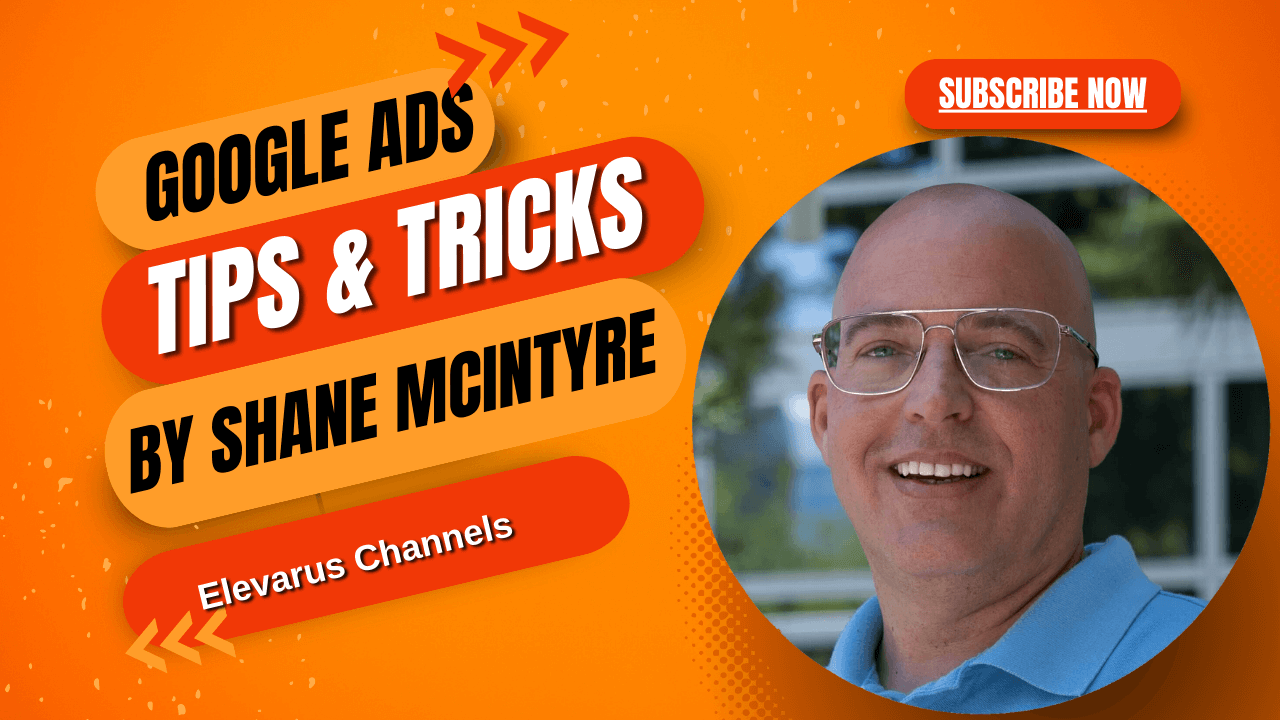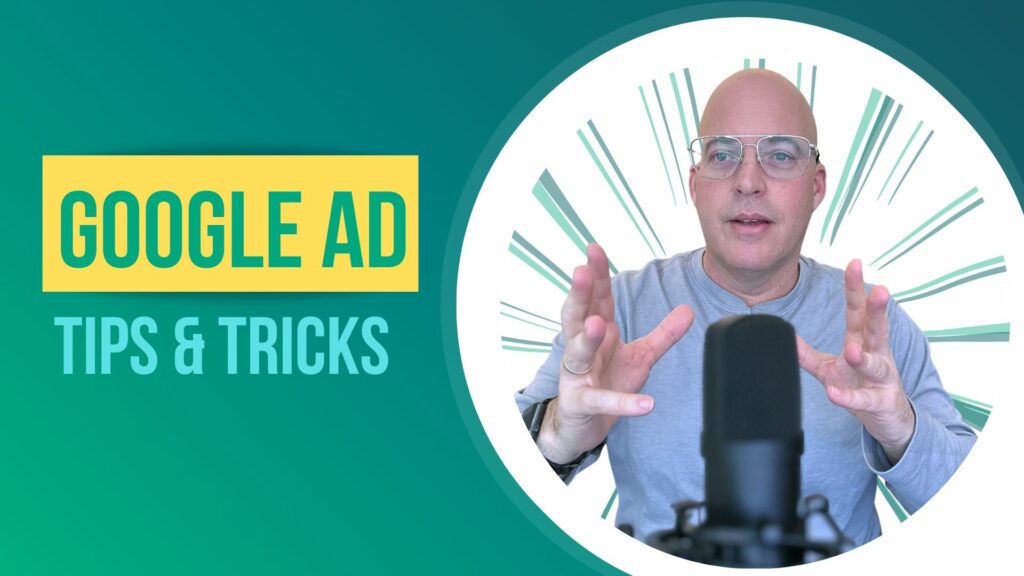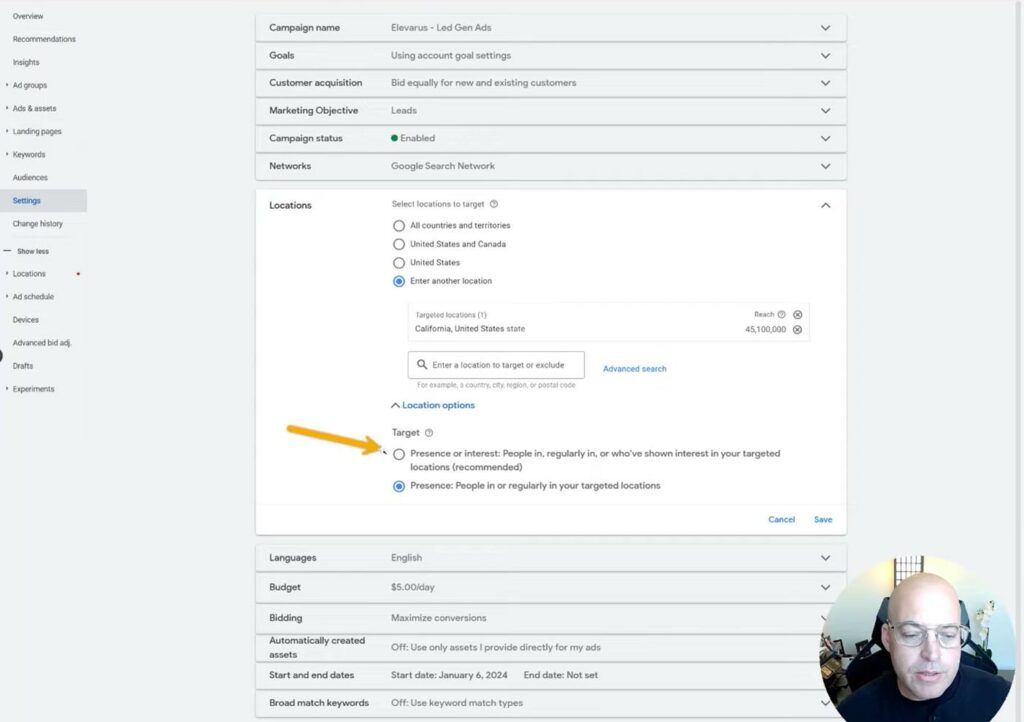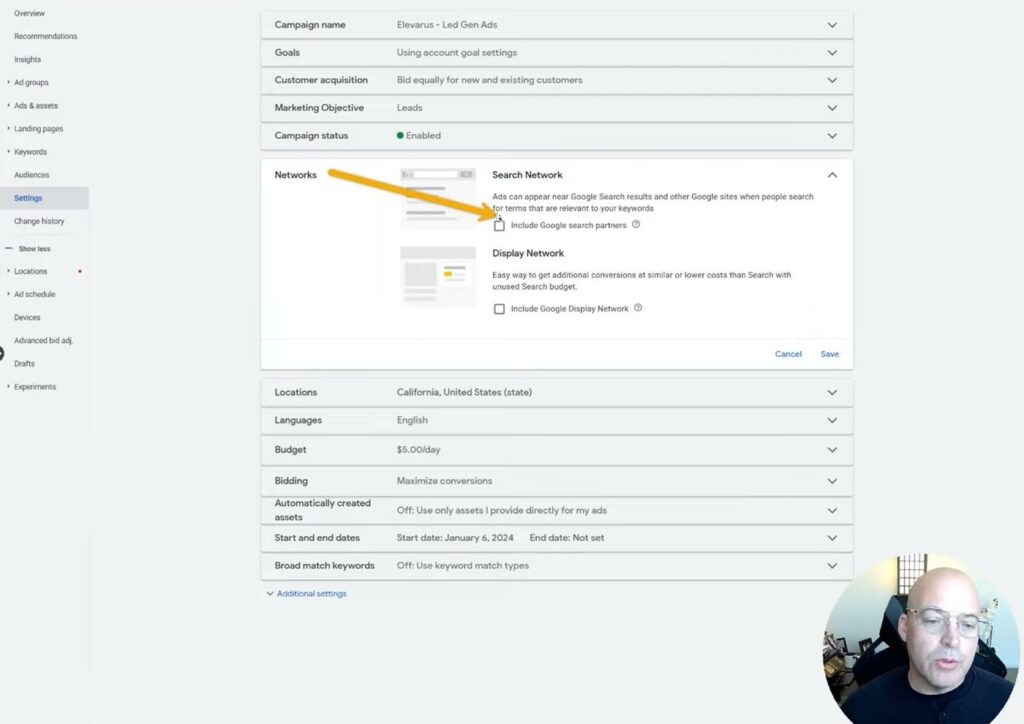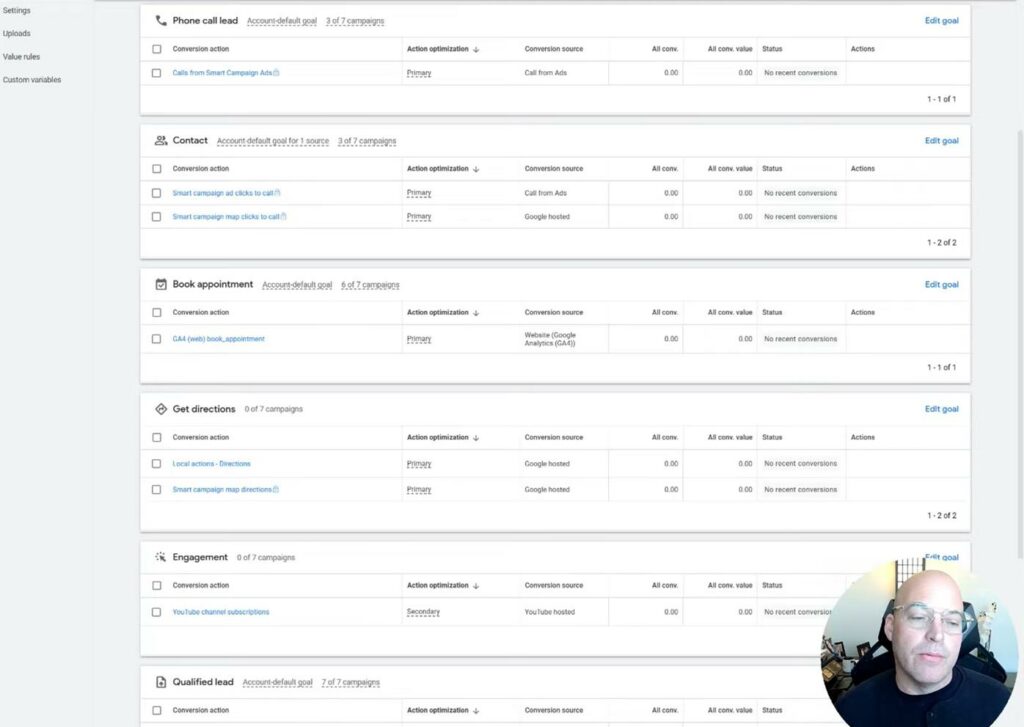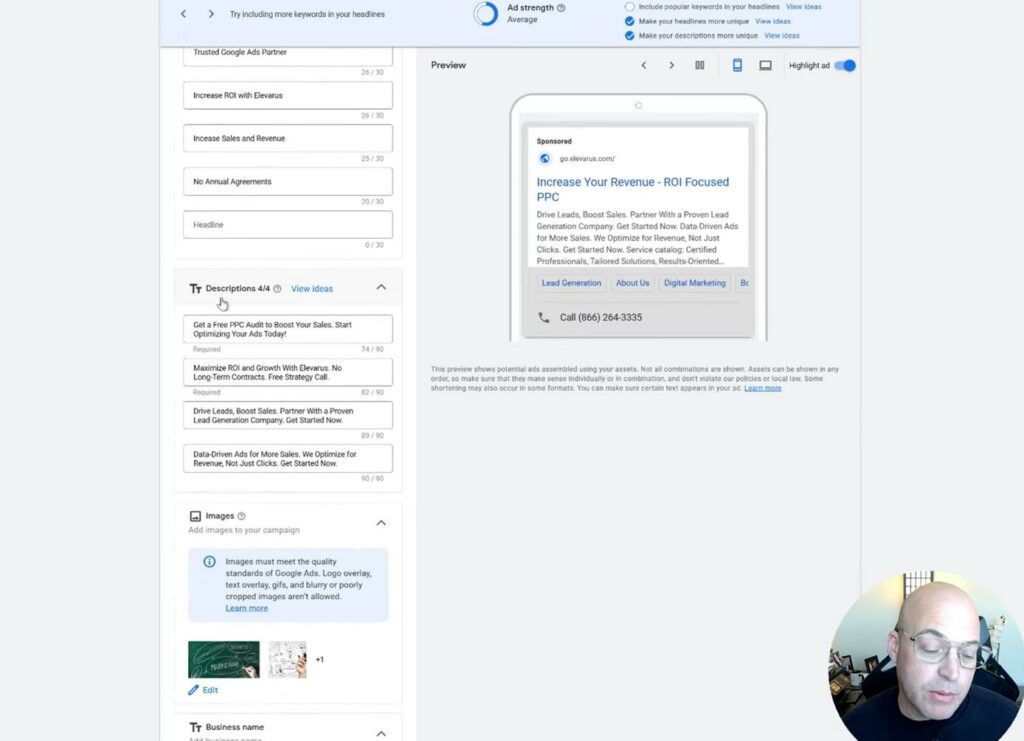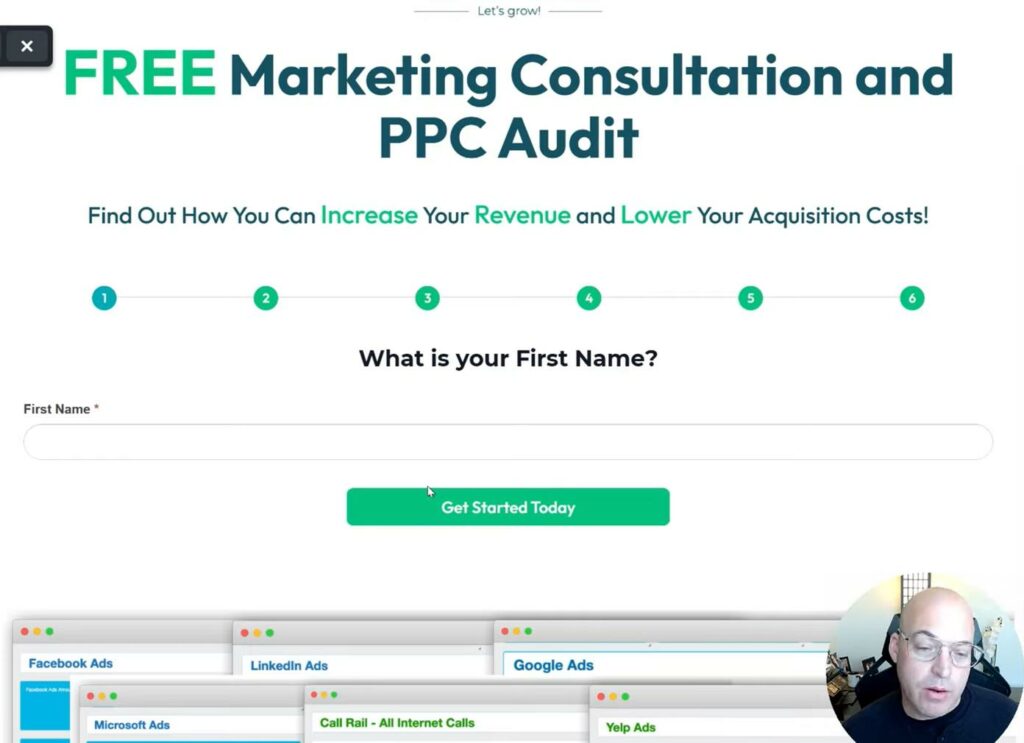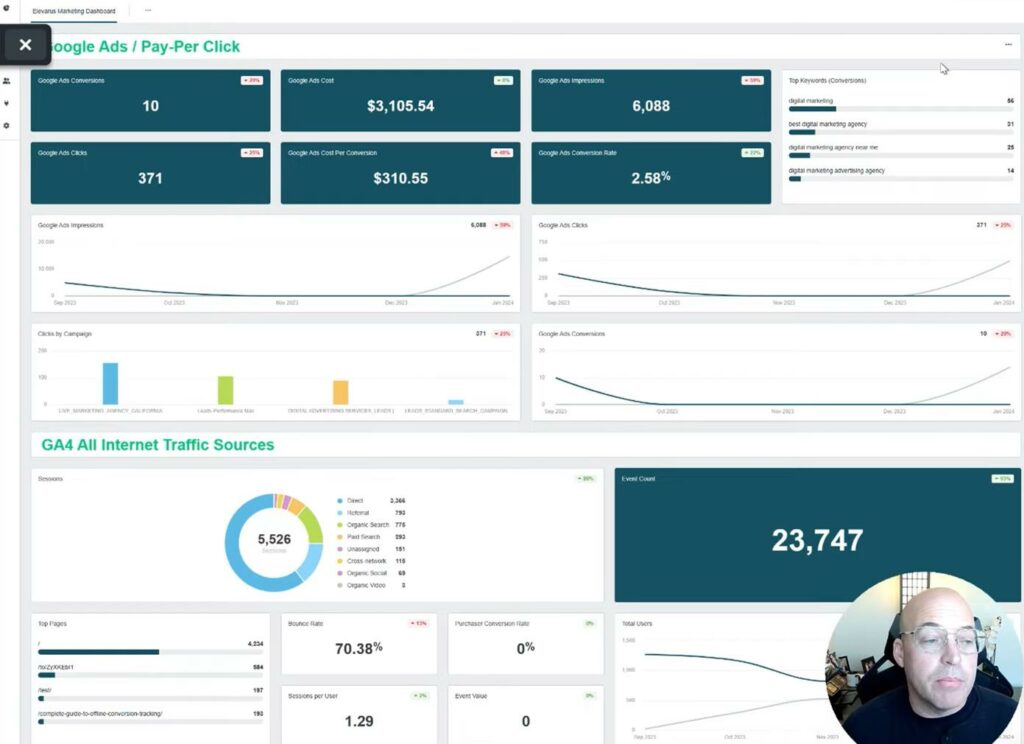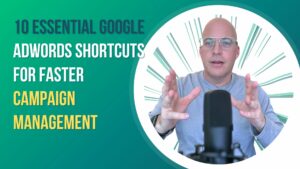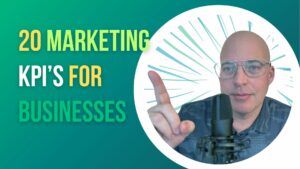I’m Shane McIntyre, founder of the Elevarus Group, and today we’re going to show some of the things we look for when auditing a Google Ads account. These are some of the three, or five top things I look for when looking at an existing ad account. Most of this will be for lead generation campaigns, although many would also apply to e-commerce. So let’s dive into Google ad tips and tricks.
The first thing, probably the number one mistake I see for many advertisers, is they don’t have correct location targeting, and this can be really easy to miss. So what you’re going to want to do is go to settings. Then go to locations, and this is applicable for mortgage, real estate, solar, any type of business where you’re looking for people physically located in a geographic location, zip code, state, etc. Whatever the case may be, even multiple states.
So we’re going to go to settings and locations, and you want to click this button down at the bottom, location options. When you go to location options, you’ll see two options there. You’re going to see, and I’ll draw an arrow to its presence or interest. This means that people could be searching outside of your location but showing an interest in it, but don’t necessarily live there or visit that location regularly.
A lot of times, Google gets this wrong. So if you have this option checked, and if you’re looking for people that reside in a physical location like real estate, mortgage, solar, or home services, you want to have this option selected.
Okay. So the next thing that I look for in a campaign is if you go to settings and you’re going to go to networks. I usually disable these two settings, and I’ll explain why here in a second.
So search network: Partners will essentially be third-party sites that are not directly Google. com. These are going to be partner traffic. Typically, lead-generation campaigns will generate low intent. A lot of times, you’re going to have fake spam leads. They look like real leads, but they’re AI-generated bots and spam leads to trick the algorithm into sending traffic to their sites.
Particularly for lead generation campaigns, this one’s a big problem if you have offline conversions set up, running at scale. If you’re an e-commerce model, sometimes you can make this work, but for 95 percent of advertisers, I recommend disabling it. The same thing is true of Display Network.
You can run separate display campaigns for lead generation campaigns, you’ll also have issues with real low-intent leads, a lot of spam, and a lot of bot traffic. So I typically recommend disabling these two, particularly for lead generation campaigns.
Okay, the next thing we’re going to look at is bid strategy, a big issue for many advertisers.
You want to go to settings and go to bidding. I’ll kind of explain what some of these options mean. For most advertisers, you will want to run either max conversions, or if you have enough scale and conversion data, you can set a target CPA. For advertisers that are capturing revenue.
Gross margin profit: They’re capturing revenue from their CRM and sales systems. You can optimize for that. That’s called conversion value. But for most advertisers, you’re going to start with max conversions. Now what’s really important about this is ensuring you have conversion goals set up in the account.
This is also a big issue for a lot of advertisers. So you want to ensure that you’ve got accurate conversion tracking across your accounts. That you’re tracking things like submitting a lead form and you’re tracking offline conversions. In this case, we’ve got a qualified lead, and you have good data.
A lot of people were using the old version of Google Analytics. but, the old version of Google Analytics is no longer sending conversion data back to Google ads. So if you’re using the old version of Google Analytics, if you haven’t stood up GA4 and updated those conversion goals, you may not be tracking conversions correctly.
Okay. A couple of things I typically look for in campaigns. I usually like to see tight theming or keyword themes around ad groups. We’ll often start with a phrase match or keyword terms. This is a couple of quick samples here from our agency. Tight phrase match, keyword terms, and broad match is Google’s direction.
We often like to see a lot of account history and a lot of algorithmic learning before we test Broadmatch, but we have seen at scale some campaigns do a little bit better with Broad Match. That’s a very different trend than even two years ago in the PPC kind of Pay Per Click world. Previously with Google ads, you never ran Broad Match with a lot of businesses and a lot of campaigns. that is starting to change as things kind of go algorithmic driven.
The concept is broad match, phrase match, and even keyword-level targeting. That’s going to start to go away over time. And it’s going to be more interest level targeting, more broad-based targeting and letting the algorithm kind of determine how to find the right customer at the right time with the right ad.
Speaking of that, a couple of things we look for under ads, I’ll give you a couple of examples here. We typically recommend having 10 to 15 headlines and responsive ads fill out your descriptions and ensure you’re going to a landing page.
You’ll notice here that there is a clear call to action above the fold. We have clear CTAs listed throughout the website. We’re adding social proof on the site reviews. But there isn’t anything else to do but take the conversion action we want our customers to take. And in this case, it’s a form fill.
We offer a free marketing consultation and PPC account audit in exchange for your information. That’s “our” offer. Your business may have a different offer depending on the type of business and industry, but the landing page has a big impact on conversions.
Okay. The last key is ensuring you have accurate analytics and tracking across Google ads and your entire marketing stack. We have an internal tool that we build for you and for our clients. You may have something else internally, but you need to be able to track key things like cost per conversion and cost of customer acquisition.
Ensure that you have good data and a good way to track things. Things are coming back from your CRM to your ad platforms, amd you’re looking at a few things, not just from Google ads, but at the omni channel across all your marketing channels to figure out how effective your advertising is.
So that’s it. Those are the top 10 things I look at from a Google ads perspective. Feel free to reach out. It’s Shane@Elevarus.com or www.Elevarus.com
Thank you so much.
Watch Video
